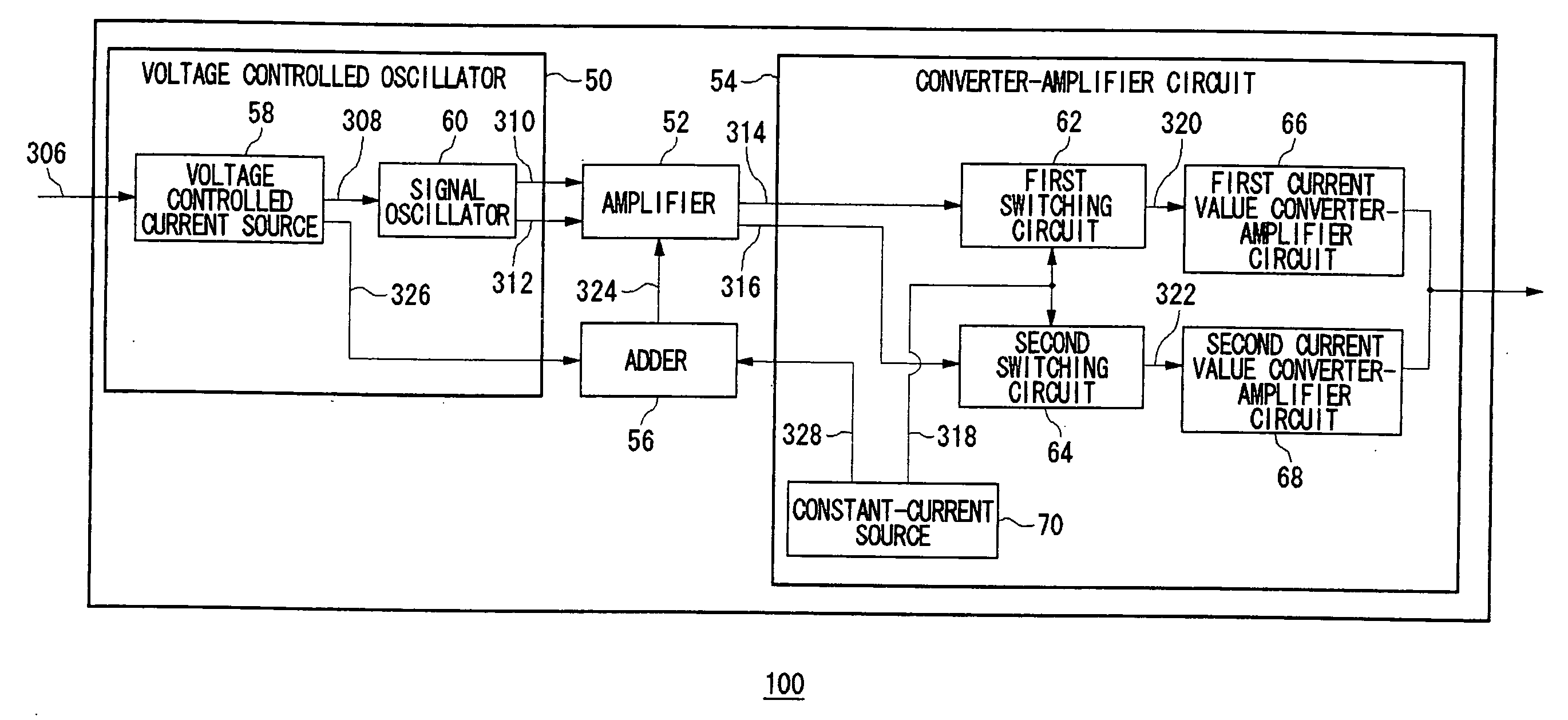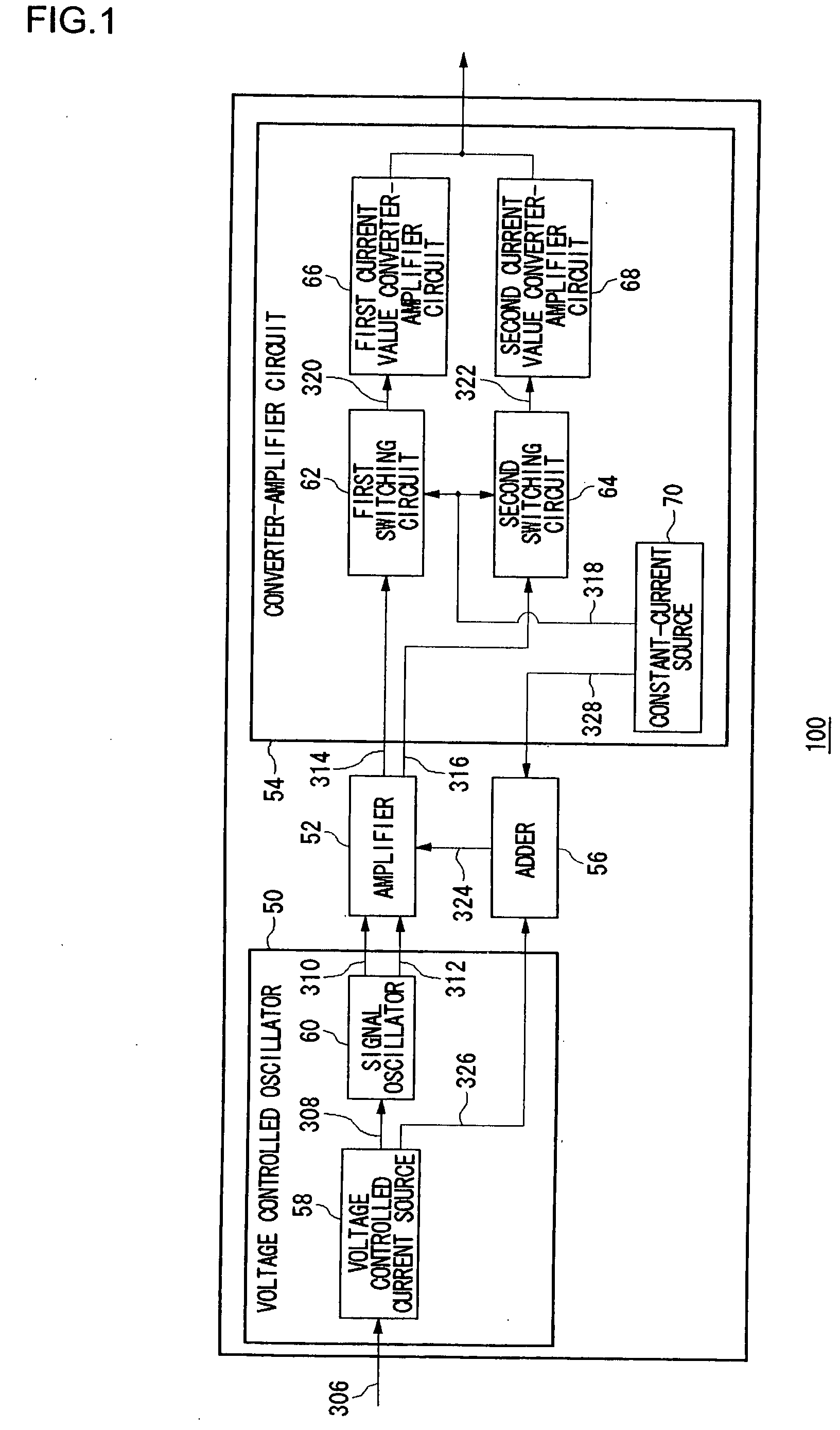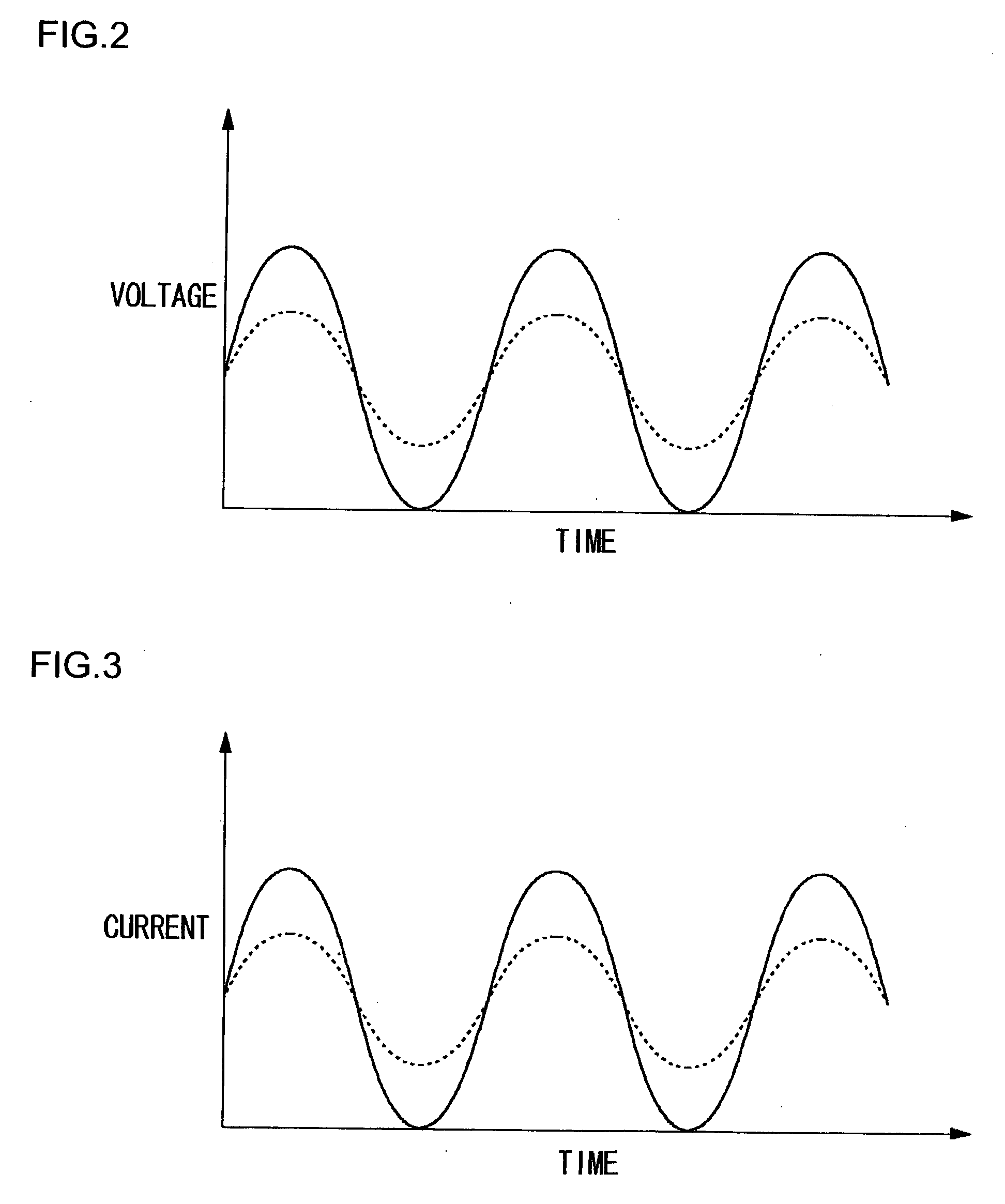Oscillator
a technology of oscillator and oscillator, which is applied in the direction of pulse generator, pulse technique, electric pulse generator circuit, etc., can solve the problems of insufficient amplification of oscillator signal, consumption of more than necessary power, and slow clock rate of amplifying fet, so as to improve oscillator signal characteristics and reduce power consumption.
- Summary
- Abstract
- Description
- Claims
- Application Information
AI Technical Summary
Benefits of technology
Problems solved by technology
Method used
Image
Examples
first embodiment
[0026] A first embodiment relates to a high-frequency oscillator so structured that a manufacturer can mass-produce a general-purpose version capable of generating oscillation signals in a wide range of oscillation frequencies and moreover a user can set predetermined oscillation frequencies for such a circuit before incorporating it into predetermined equipment. A high-frequency oscillator according to the present embodiment changes the oscillation frequency of an oscillation signal in response to applied control voltage. For example, the circuit raises the oscillation frequency in response to a higher control voltage and lowers it in response to a lower control voltage. Also, the amplitude of the voltage of an oscillation signal is sufficiently amplified by an amplifying FET, and the voltage of the amplified oscillation signal is converted into a current. In particular, a high-frequency oscillator according to this embodiment, which increases the amount of current flowing to the a...
second embodiment
[0043] A high-frequency oscillator according to a second embodiment is a circuit similar to that of the first embodiment. Though a high-frequency oscillator is explained using function blocks in the first embodiment, a high-frequency oscillator according to the second embodiment will be explained with a circuit configuration such as an FET.
[0044]FIG. 4 shows a high-frequency oscillator 100 according to a second embodiment of the present invention. It is to be noted here that the same function blocks and signals in FIG. 4 as those in FIG. 1 are given the same reference numerals as in FIG. 1.
[0045] A variable current source 72 delivers a current that varies according to a controlled voltage 306. Transistors Tr1, Tr2 and Tr3 constitute a current mirror circuit. The oscillator equivalent current 326 is delivered from the transistor Tr2 whereas the oscillator drive current 308 is delivered from the transistor Tr3. As described above, the oscillator drive current 308, the oscillator equ...
third embodiment
[0057] In this third embodiment, a structure of apparatus or LSI to which a high-frequency oscillator according to the first or second embodiment is implemented or applied will be described.
[0058]FIG. 5A illustrates a structure of an optical pickup 200 among applied examples of the high-frequency oscillator 100 according to the third embodiment. The optical pickup 200 includes a high-frequency oscillator 100, a semiconductor laser chip 102, a photodiode 104 for use with a monitor and a light receiving photodiode 108. The optical pickup 200 reads signals out of or write them to a disk, which is a recording medium, in information record / reproduce equipment such as an optical disk device or magneto-optical disk unit.
[0059] The semiconductor laser chip 102 emits laser beams in response to current supplied from a high-frequency oscillator 100 described later. Based on a control signal indicated by voltage from an automatic power control (APC) circuit described later, the high-frequency...
PUM
 Login to View More
Login to View More Abstract
Description
Claims
Application Information
 Login to View More
Login to View More - R&D
- Intellectual Property
- Life Sciences
- Materials
- Tech Scout
- Unparalleled Data Quality
- Higher Quality Content
- 60% Fewer Hallucinations
Browse by: Latest US Patents, China's latest patents, Technical Efficacy Thesaurus, Application Domain, Technology Topic, Popular Technical Reports.
© 2025 PatSnap. All rights reserved.Legal|Privacy policy|Modern Slavery Act Transparency Statement|Sitemap|About US| Contact US: help@patsnap.com



